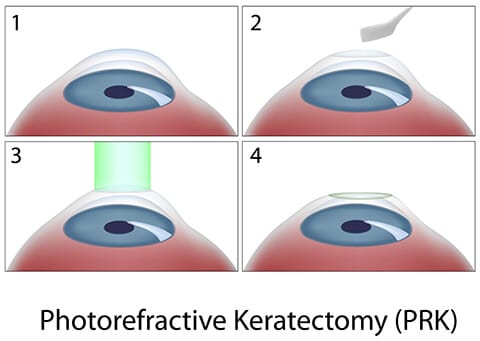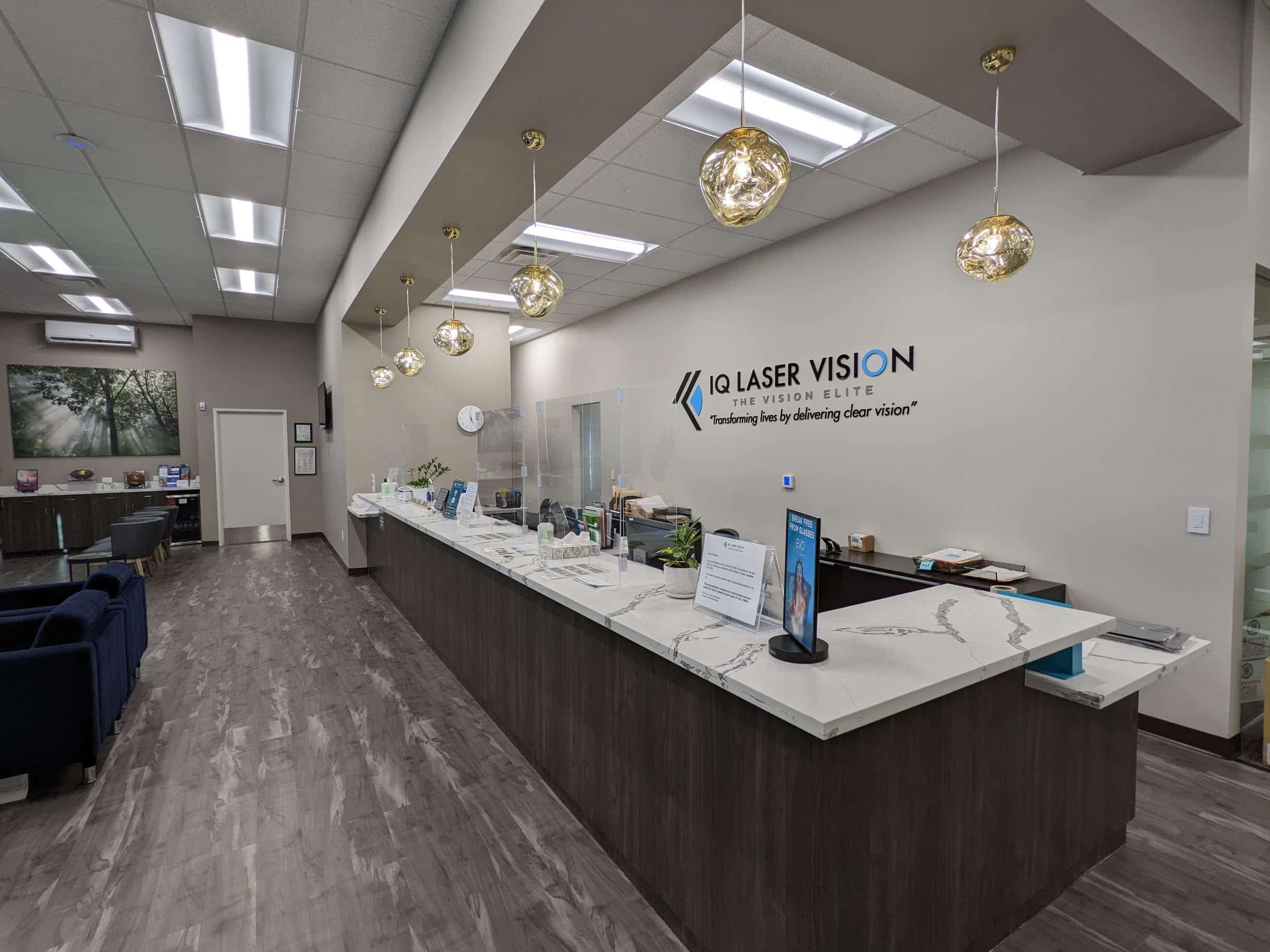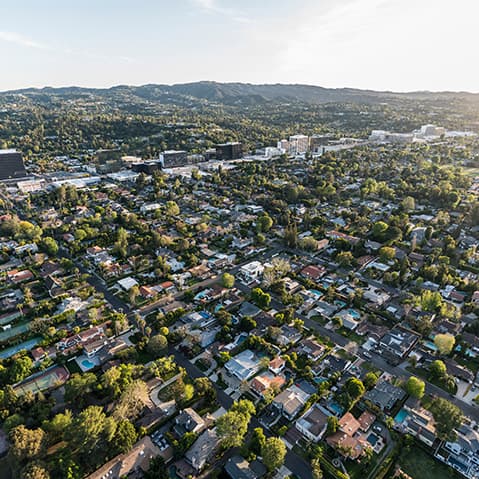Imagine waking up every morning and seeing the world through new, perfectly clear eyes, without the need for glasses or contact lenses.
No, it’s not too good to be true, because here at IQ Laser Vision we help to make that dream a reality. Thanks to our extensive research and knowledge of the trade, our PRK eye surgery in Las Vegas is superfast, pain-free, and extremely effective. So, why wait any longer to improve your vision? Get on board with us at IQ Laser Vision and see how we can assist you.

What is PRK or LASEK?
LASEK is a laser eye surgery that does not create a corneal flap. Like LASIK, this procedure uses a laser to reshape the cornea and improve your vision.
PRK is also a similar procedure. This surgery removes the outer layer of your cornea and resurfaces it to give you clear vision.
Am I a candidate for LASEK or PRK?
You might be a good candidate for LASEK or PRK if:
- Your vision is stable and it hasn’t gotten any worse in the last year
- Your corneas are healthy
- You don’t have eye diseases like glaucoma, cataracts, or keratoconus
- You’re over 18 years old and in good health
- You’re not currently pregnant or nursing
SMILE is another option for those interested in having LASEK or PRK. Like LASEK and PRK, SMILE doesn’t involve creating a flap in the cornea. It may be safer for patients who have thinner corneas or suffer from dry eye syndrome that don’t qualify for LASIK.
How does LASEK work?
During the procedure, your surgeon will provide you with numbing eye drops. This ensures you won’t feel any discomfort while having LASEK! You will focus on a blinking red light as the surgeon works.
You won’t have to stay still for long, and your surgeon will talk you through the procedure. Dr. Lin is one of the first surgeons in the Los Angeles area to offer LASEK to patients!
How does PRK work?

During our PRK in Las Vegas, you’ll have the epithelial layer completely removed. This gives the surgeon access to the cornea.
A specialized contact lens is placed over the cornea to protect it as it heals. Unlike LASIK, there is no flap created during PRK, which makes the procedure better for patients who may have naturally thinner corneas or those who are not qualified for LASIK.
The existing corneal tissue from the epithelium that stays on the eye acts as a natural bandage for the area treated.
What to Expect from PRK Eye Surgery in Las Vegas
PRK surgery in Las Vegas is an excellent alternative if you don’t quite meet the criteria for LASIK. But what we’re sure you’ll be pleased to hear is that our PRK in Las Vegas service provides just as good results as our other procedures. So, how does it all work? Our skilled doctors will initially remove the epithelial layer of the eye to access the cornea. From here, a specialized contact lens will be inserted, but don’t worry, we make sure that you don’t feel a thing throughout this quick procedure. We’ll also provide useful tips on how to aid recovery, what you should avoid immediately after surgery, and how to protect your new and improved eyes moving forward.
If you’re considering cataract surgery instead, our cataract surgeons in Las Vegas can provide top-tier care for restoring vision.
What Are The Benefits of LASEK and PRK?
- IQ Laser Vision‘s LASEK and PRK surgery in Las Vegas have a lot of benefits. You won’t need to wear glasses or contact lenses anymore, which means you’ll save money and a lot of hassle.
- Your vision will be clear, and your corneas will be stronger. When you choose LASEK or PRK instead of LASIK, you won’t have any of the potential complications that might come with creating a corneal flap.
- LASEK and PRK are also good options for patients who might not qualify for LASIK. If you have a thin cornea, a high prescription, or a cornea that’s irregularly shaped, LASEK could be a better choice for you.
Frequently Asked Questions
Why Choose IQ Laser Vision for PRK Eye Surgery in Las Vegas
Many surgeons offer PRK in Las Vegas, so why should you choose IQ Laser Vision? Here are just a few reasons as to why we feel that we are the best in the business:
- Highly trained staff
Our doctors’ knowledge of PRK eye surgery in Las Vegas is second to none. Together we have supported over 300,000 patients to improve their eyesight, and have 60 years of combined experience. You can rest assured that we’ll get the job done to the highest standard.
- Flexible payment options
No longer do you have to pay for your PRK surgery in Las Vegas in full upfront. But instead, you can choose our handy payment plan. We split the cost over monthly installments, which makes paying your procedure far more manageable.
- Free 1:1 consultation
You’ve heard that right, here at IQ Laser Vision we offer a personalized discussion absolutely free of charge. Sign up on our website for a no-strings-attached chat with one of our professionals. We also provide free consultations for other procedures, such as RLE in Las Vegas (Refractive Lens Exchange), which may be suitable for those with presbyopia or high prescriptions.
We have a heap of outstanding reviews from our previous patients. Head on over to our website to take a look or check out our testimonials here.
Get The Benefits of PRK in Las Vegas with IQ Laser Vision
Still not sure whether PRK surgery in Las Vegas is the right move for you? No problem. Get in touch with us via phone, email, or live chat or use our instant-book form, and we will endeavour to answer any questions you may have. We offer a vast range of services here at IQ Laser Vision, to help our patients to achieve clearer vision and in turn, more confident and fulfilled lives.
For those seeking other options, we also offer LASIK eye surgery in Las Vegas, a great alternative for those who qualify for it.
What happens during a complimentary consultation?
You can visit your refractive surgeon in Los Angeles and other convenient locations at IQ Laser Vision for a complimentary consultation. This visit will help you decide if PRK or LASEK are the best choice for you.
At this consultation, your surgeon will explain the procedures and examine your eyes. You can also ask any questions you have about PRK and LASEK in our Las Vegas clinic.























